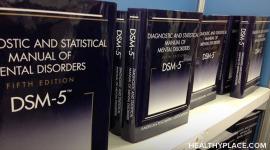Determining Safety of Psychiatric Drugs During Pregnancy Difficult

Research on the safety of taking psychiatric medications during pregnancy is sparse, leaving doctors to turn to available literature on the subject.
Clinicians are frequently caught between a teratologic rock and a clinical hard place when it comes to the use of psychiatric medications during pregnancy. Unfortunately, the Food and Drug Administration's current classification system, which assigns ratings with respect to the safety of drugs during pregnancy, does not necessarily help and can be misleading.
Recognizing such limitations, the FDA is in the process of revamping the system, but for now it's incumbent on physicians to go beyond the package insert and refer to the available literature and other resources to get a better picture of the full amount of reproductive safety data available on a certain drug.
The use of certain antidepressants during pregnancy is a striking example of how category labeling does not necessarily help guide clinical care-and how it can make certain compounds with relatively less safety data appear to be "safer" than medicines for which we have far more safety data.
For example, bupropion, marketed as Wellbutrin for depression and Zyban for smoking cessation, has been classified as a category B compound based on anecdotal human data from a very small sample of women and limited animal data, which do not support adverse effects associated with prenatal exposure.
Although the manufacturer has established a bupropion pregnancy registry, the data on this drug are sparse when compared with the amount of safety data on fluoxetine (Prozac) and citalopram (Celexa). Yet both these selective serotonin reuptake inhibitors (SSRIs) are labeled category C, presumably based on adverse effects seen in studies of rats that ingested 10-18 times the maximum human recommended daily doses of these drugs. Under the current system, these types of data justify a C category almost regardless of the amount of human data available.
The category C label does not reflect human data on more than 2,300 cases of first-trimester exposure to fluoxetine or the nearly 400 cases of first-trimester exposure to citalopram; these data do not support an increased risk for major congenital malformations. But we have seen cases of women who are stabilized on citalopram or fluoxetine and then switched during pregnancy to medicines such as bupropion, because clinicians assume a category B drug is "safer" than fluoxetine or citalopram, prompting the clinician to incorrectly assume that the absence of adverse data implies safety.
In this scenario, not only is the patient put at risk of not responding to the new antidepressant and having a relapse, but she is unnecessarily taken off a medicine for which there is a relatively abundant amount of safety data.
Category labeling also fails us when we consider the SSRIs as a class. This is a particularly important issue because it is incorrect to assume that all drugs within the same class have equal reproductive safety. All the available SSRIs are labeled category C, but there's nowhere near the amount of information on first-trimester expo sure to paroxetine (Paxil) and sertraline (Zoloft) as there is for fluoxetine and citalopram.
Lithium is another dramatic example of the complexity of risk assessment of psychiatric medications when considering category label assignment. Other factors come into play when considering whether an agent should be used during pregnancy.
For example, lithium is a category D drug because of clear evidence of an increased risk of a cardiovascular malformation (Ebstein's anomaly) associated with first-trimester exposure. Many women with bipolar disorder who become pregnant or want to become pregnant are counseled by their physicians to discontinue lithium, even abruptly, solely based on the category D label.
However, the absolute risk of Ebstein's anomaly is estimated at 0.05%-0.1%. Since the risk of relapse within the first 6 months of lithium discontinuation is so high-over 60%-women with bipolar disease may choose to assume the relatively small absolute risk for teratogenesis associated with first-trimester exposure, regardless of the drug's category.
These examples underscore the limitations of the category-labeling system and the need to complement this information with other data from the medical literature and elsewhere. By not relying exclusively on the labeling system, physicians and their patients can make more informed decisions when selecting psychiatric drugs.
(References on this topic are also available on the Massachusetts General Hospital Web site at www.mgh.harvard.edu/depts/ womens/index.htm.)
Dr. Lee Cohen is a psychiatrist and director of the perinatal psychiatry program at Massachusetts General Hospital, Boston. He is a consultant for and has received research support from manufacturers of several SSRIs. He is also a consultant to Astra Zeneca, Lilly and Jannsen - manufacturers of atypical antipsychotics. He originally wrote this article for ObGyn News.
APA Reference
Staff, H.
(2009, January 7). Determining Safety of Psychiatric Drugs During Pregnancy Difficult, HealthyPlace. Retrieved
on 2026, January 2 from https://www.healthyplace.com/other-info/mental-illness-overview/determining-safety-of-psychiatric-drugs-during-pregnancy-difficult



